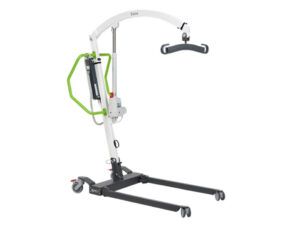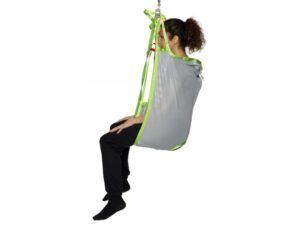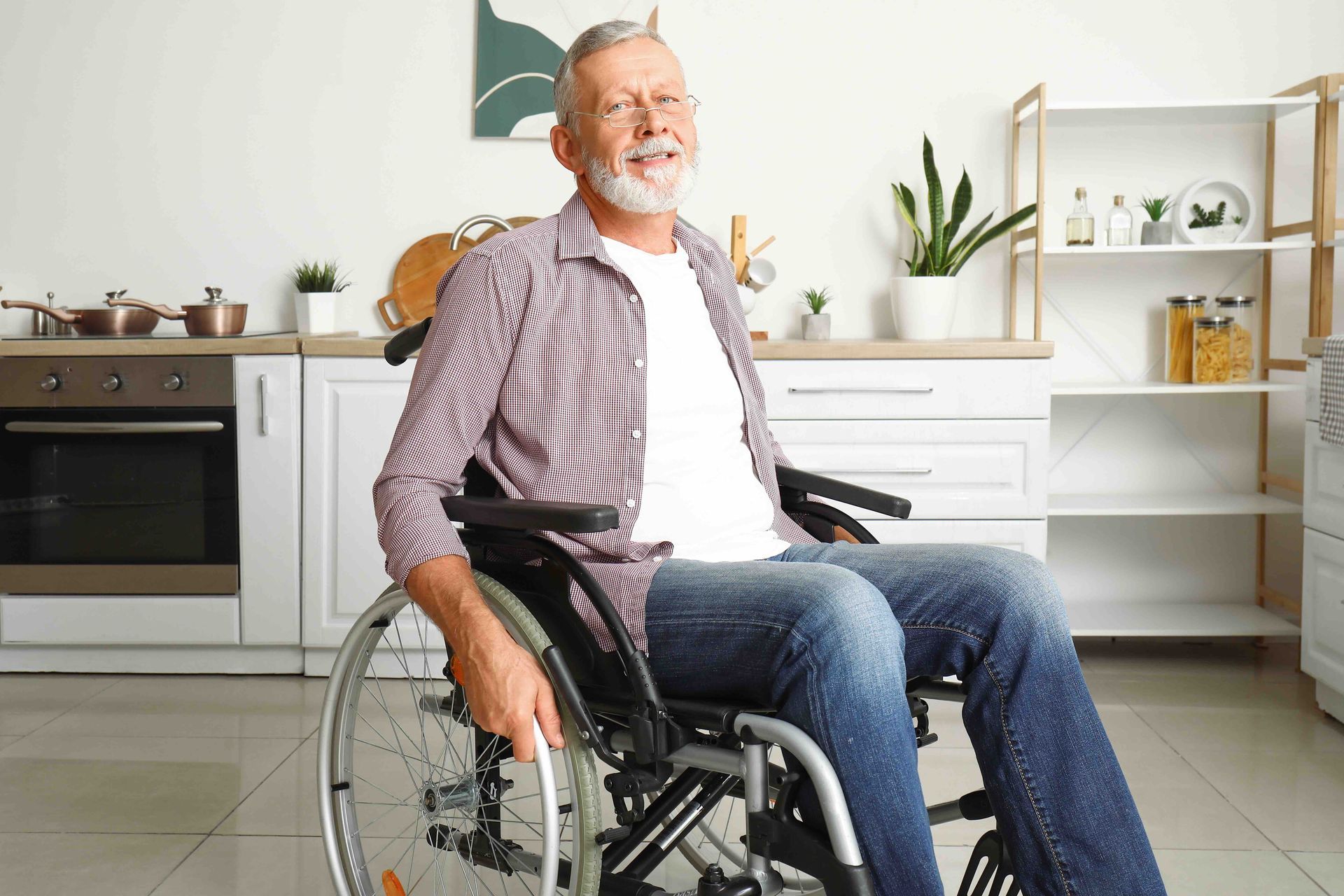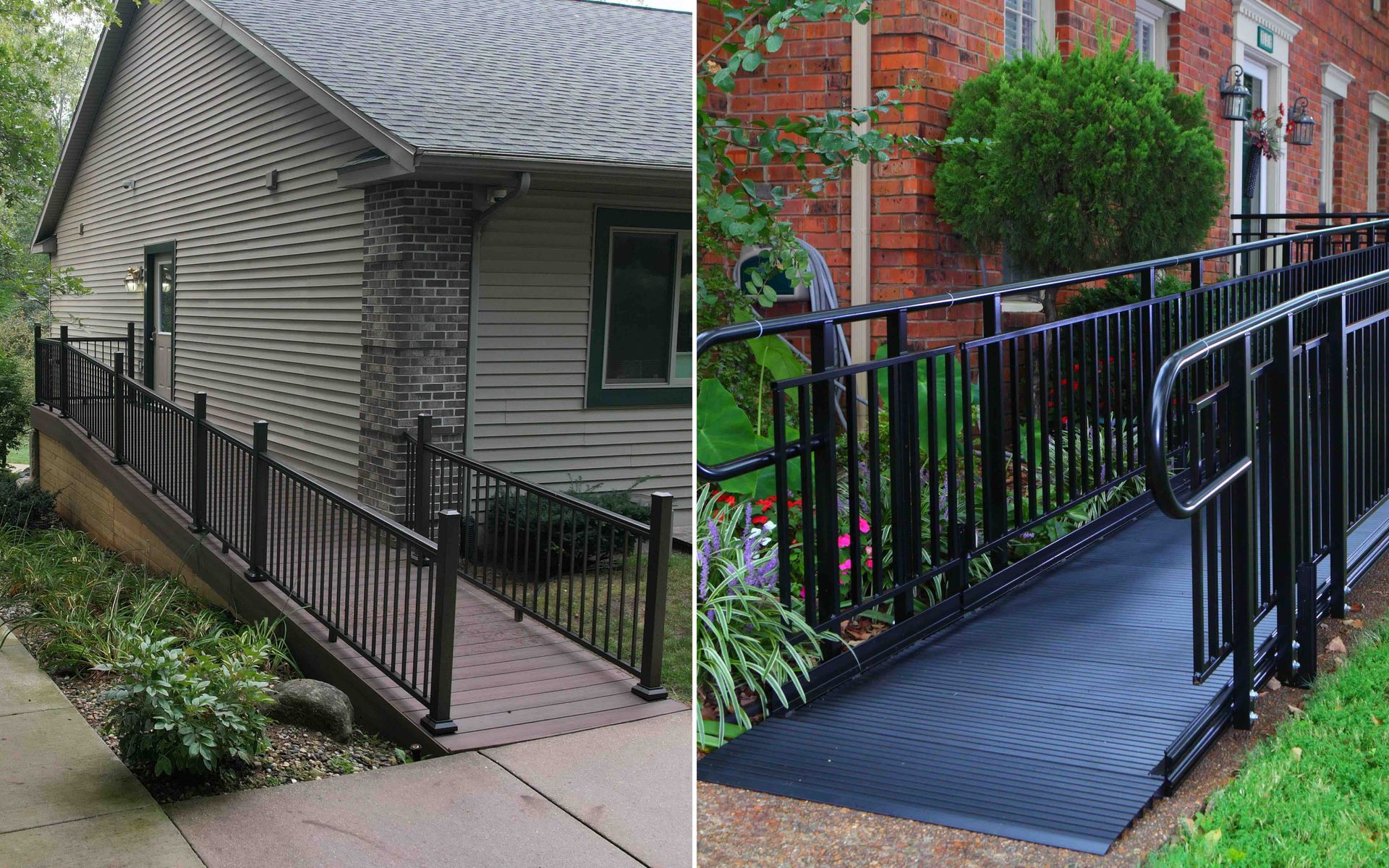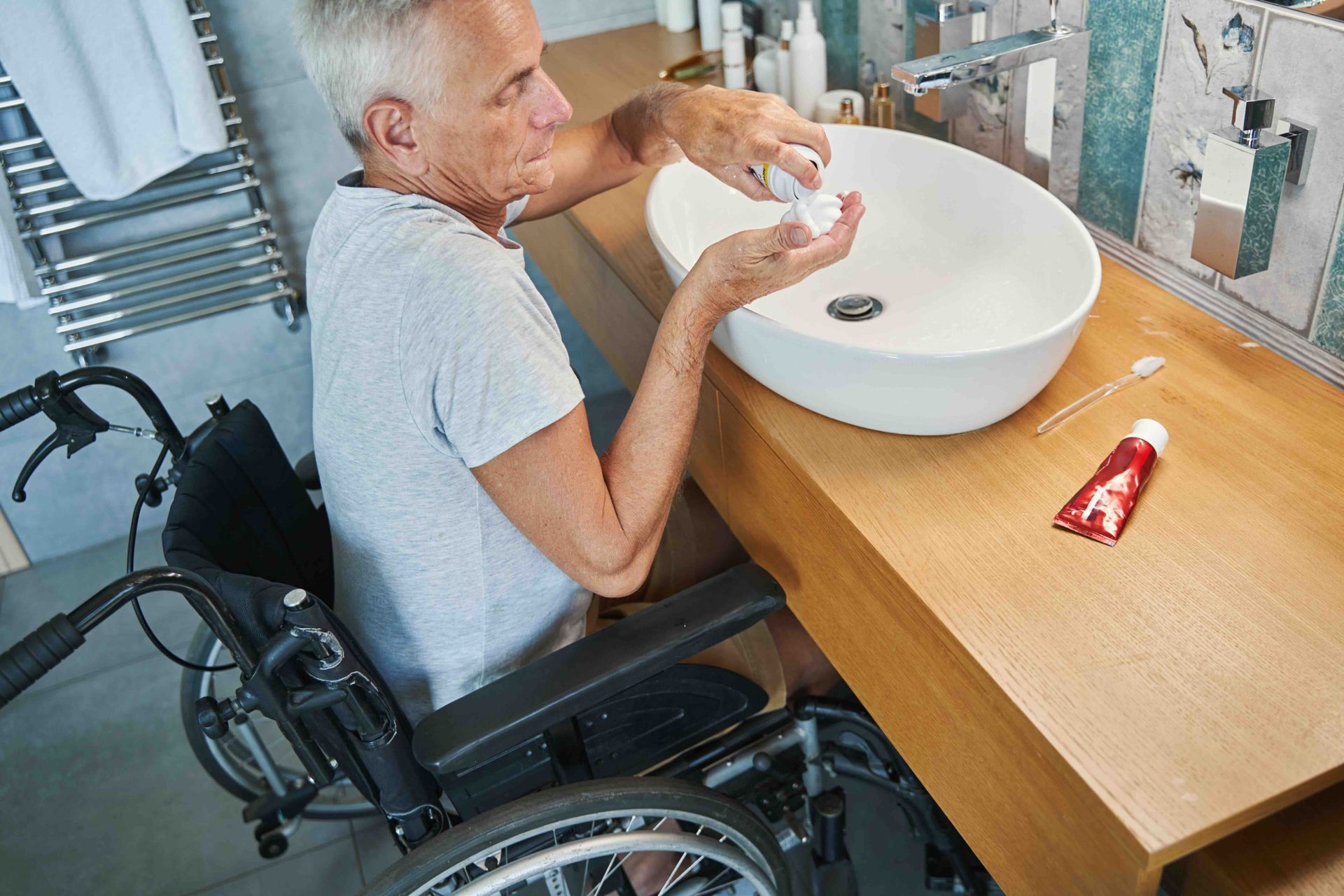Patient lifts, like wheelchair ramps, are indispensable for caregivers, providing a secure and effective method to transfer individuals with limited mobility. These devices can make caregiving significantly more accessible and safer, both for the patient and the caregiver. However, proper usage is crucial to avoid potential injuries or mishaps. This comprehensive guide expands on ten essential tips to ensure patient lift safety in a home environment. If you have questions, please don’t hesitate to call us at Lakeshore Barrier-Free!
1. Get the Right Training
Before using a patient lift, it's crucial to receive proper training. It is essential to understand the specific model you own, its features, capabilities, and limitations. Different models may have other operational procedures, and being well-versed in these is critical to safe operation. Many manufacturers or healthcare providers offer training sessions or instructional videos, which can be extremely helpful. If you're unsure about any aspect of the lift, don't hesitate to ask for additional training or clarification. The more knowledgeable you are, the safer the operation will be.
2. Prioritize Patient Safety
Patient safety should always be the top priority when using a lift. Before each use, assess the patient's condition and specific needs. Is the patient feeling well? Are there any new injuries or conditions that might affect the lift? Once you've assessed the patient, choose the appropriate sling type, ensuring it fits correctly. An ill-fitting sling can lead to discomfort or even injury. Position the patient comfortably and securely in the sling, ensuring no pressure points or discomfort. Remember, the patient's safety and comfort are paramount to the lifting process.
3. Familiarize Yourself with the Lift's Controls
Understanding how to operate the lift's controls is another critical aspect of safe usage. The controls should be operated smoothly and gradually to avoid sudden movements that could cause harm or discomfort to the patient. It's beneficial to practice using the lift with an empty sling first, allowing you to become comfortable with the controls and the lift's operation before using it with a patient. This practice can help build confidence and proficiency, ensuring you're well-prepared when using the lift with a patient.
4. Maintain Proper Body Mechanics
Caregivers must also focus on their body mechanics to avoid injury while using a patient lift. Stand with your feet shoulder-width apart, knees slightly bent, and keep your back straight. When operating the lift, avoid twisting your body, as this can lead to strains or injuries. Use your legs rather than your back to do any lifting. Proper body mechanics not only protect you from injury but also ensure that you're in a stable position, contributing to the overall safety of the lift operation.
5. Ensure the Lift is on a Stable and Level Surface
The stability of the surface where the lift is used is a significant factor in safe operation. Uneven or unstable surfaces can compromise the lift's safety and make it difficult to maneuver, increasing the risk of accidents. Before using the lift, ensure the ground is stable and level. Additionally, clear the area around the lift of any obstacles that might impede movement or pose a tripping hazard. A clear, stable area is crucial for the smooth operation of the lift and the safety of both the patient and the caregiver.
6. Regularly Inspect the Lift for Signs of Wear and Tear
Like any mechanical equipment, patient lifts are subject to wear and tear over time. Regular lift inspection is necessary to ensure it remains in good working condition. Check all lift parts, including the sling, base, and any moving components, for signs of damage or wear. If any parts are damaged or worn, replace them immediately to prevent malfunctions. Adhering to the manufacturer's recommended maintenance schedule is also important, as regular maintenance can prevent issues before they become serious problems.
7. Always Use the Lift Within its Weight Capacity
Patient lifts are designed to support a specific weight range, and exceeding this capacity can lead to equipment failure and potentially severe injuries. Always be aware of the lift's weight limit, and ensure the patient's weight falls within this range. If the patient's weight exceeds the lift's capacity, seeking alternative lifting methods is essential to ensuring safety. Never attempt to use the lift beyond its designed limits, as this can compromise the safety of both the patient and the caregiver.
8. Consider an Extra Pair of Hands Whenever Possible
Having an additional person to assist with the lift can significantly enhance safety. Two people can operate the lift while the other helps the patient, ensuring everything goes smoothly. This approach reduces the physical strain on the primary caregiver and allows for better control during the lifting process. Coordinate movements with your assistant to ensure a smooth and controlled lift. This teamwork approach makes the process easier and adds an extra layer of safety.
9. Communicate with the Patient When Using the Lift
Effective communication with the patient is essential when using a lift. Explain each step of the process to the patient before you begin, and offer reassurance throughout. This communication helps the patient understand what to expect and encourages them to relax, reducing the likelihood of sudden movements that could disrupt the lifting process. Additionally, maintaining open communication allows the patient to express discomfort or concerns, enabling you to address these issues promptly.
10. Practice Emergency Procedures
Even with the best planning, emergencies can happen. That's why it's crucial to be prepared and practice emergency procedures regularly. Learn how to safely lower the patient if a power failure or equipment malfunction occurs. Familiarize yourself with any manual operations the lift might have, such as emergency-reducing mechanisms. Regularly reviewing and practicing these procedures with other caregivers ensures everyone knows what to do in an emergency, providing peace of mind and enhancing overall safety.
The Importance of Patient Lifts in Home Care
Patient lifts are vital in-home care, especially for individuals with limited mobility. These devices allow caregivers to move patients safely and comfortably, reducing the risk of injury for both parties. However, their safe operation depends on several factors, including proper training, regular maintenance, and careful attention to the patient's needs.
Understanding Different Types of Patient Lifts
Various types of patient lifts are available, each designed for specific scenarios. Understanding the differences between these lifts can help you choose the right one for your needs:
- Manual Lifts
These are operated by hand and often require more physical effort from the caregiver. They are generally more affordable but may not be suitable for all patients, especially those who are heavier or have severe mobility issues. - Electric Lifts
Powered by electricity or a battery, these lifts are more accessible and require less physical effort. They are ideal for heavier patients or those who need to be moved frequently. - Sit-to-Stand Lifts
These are designed for patients who have some ability to bear weight and can assist in the transfer process. They help the patient move from sitting to standing, reducing the strain on the caregiver. - Ceiling Lifts
Installed in the ceiling, these lifts provide a permanent solution for patient transfers. They are instrumental in homes with limited space but require professional installation and can be more expensive.
Selecting the Right Sling
The sling is a crucial component of the patient's lift, and selecting the right one is essential for safety and comfort. Slings come in various shapes, sizes, and materials, each suited for different types of transfers:
- Universal Slings
These are versatile and can be used for most types of transfers. They provide full-body support and are suitable for patients who need maximum assistance. - Hygienic Slings
Designed for toileting, these slings allow easy access to clothing and the perineal area, making bathroom visits more manageable. - Seated Slings
Ideal for transfers from a sitting position, these slings support the patient's back and thighs, ensuring a comfortable and secure lift. - Bariatric Slings
Made for heavier patients, these slings are reinforced and provide extra support, ensuring safety during the transfer.
Choosing the suitable sling involves considering the patient's size, weight, and needs. It's essential to regularly check the sling for wear and tear and replace it as needed.
Adapting Your Home for Safe Lift Use
Using a patient lift at home may require adaptations to ensure safe and efficient operation. Here are some suggestions:
Space Planning
Ensure enough space around the bed, wheelchair, or other areas where the lift will be used. This space is crucial for maneuvering the lift safely.
Non-Slip Flooring
Ensure that the floors in areas where the lift will be used are non-slip to prevent accidents. This can be particularly important in bathrooms and other potentially wet areas.
Proper Lighting
Good lighting is essential to see what you're doing and avoid accidents. Ensure that all areas where the lift is used are well-lit.
Accessible Power Outlets
If you're using an electric lift, make sure there are accessible power outlets nearby. Using extension cords can be hazardous, so it's better to have outlets within easy reach.
The Role of Regular Maintenance in Lift Safety
Regular maintenance of the patient lift is crucial for its safe operation. Here's what you need to do:
Follow the Manufacturer's Guidelines
Adhere to the maintenance schedule provided by the manufacturer. This typically includes regular inspections, lubricating moving parts, and checking the battery for electric lifts.
Keep a Maintenance Log
Document all maintenance activities, including inspections and repairs. This log can help you track when parts were last checked or replaced.
Inspect Before Each Use
Make it a habit to inspect the lift before each use, checking for any signs of wear, loose parts, or other issues. If anything seems off, don't use the lift until a professional has inspected it.
TALK TO THE EXPERTS OF LAKESHORE BARRIER FREE TODAY!
We believe that everyone should have access to every area of their home! We work directly with you to make sure that every grab bar, bathroom sink, kitchen countertop, patient lift, and more is at the perfect location for you and your loved ones. Call us at
(616) 477-2685 or email us at
Info@LakeshoreBarrierFree.com
Share this blog


